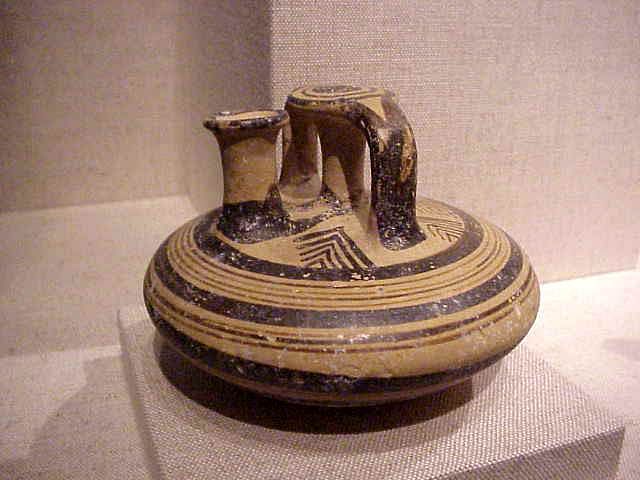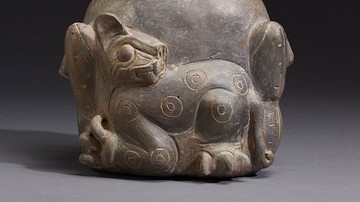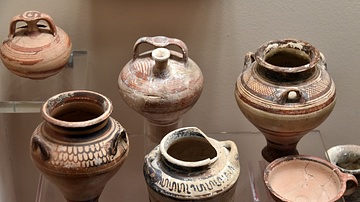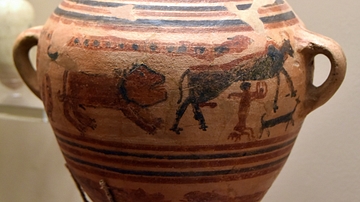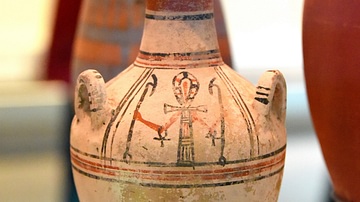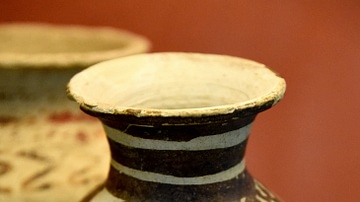Illustration
A Mycenaean terracotta stirrup jar, c. 1200 BCE. The name derives from the resemblance of the handle to a double stirrup. The handle is often decorated with a false spout whilst the true spout is to the side and separate from the handle. This form first appeared in Crete in the 16th century BCE but became popular with the Mycenaeans in the 14th century BCE and was the most commonly produced vessel shape. The design is typical Mycenaean with bands of various width and decoration of stylized forms - in this case leaves - reserved for the neck of the vessel. Stirrup jars were most often used to store wine and oils. Provenance: unknown. (The Walters Art Museum, Baltimore, USA).
Cite This Work
APA Style
Baltimore), M. H. (. a. T. W. A. M. (2012, September 29). Mycenaean Stirrup Jar. World History Encyclopedia. Retrieved from https://www.worldhistory.org/image/911/mycenaean-stirrup-jar/
Chicago Style
Baltimore), Mary Harrsch (Photographed at The Walters Art Museum,. "Mycenaean Stirrup Jar." World History Encyclopedia. Last modified September 29, 2012. https://www.worldhistory.org/image/911/mycenaean-stirrup-jar/.
MLA Style
Baltimore), Mary Harrsch (Photographed at The Walters Art Museum,. "Mycenaean Stirrup Jar." World History Encyclopedia. World History Encyclopedia, 29 Sep 2012. Web. 01 Nov 2024.
